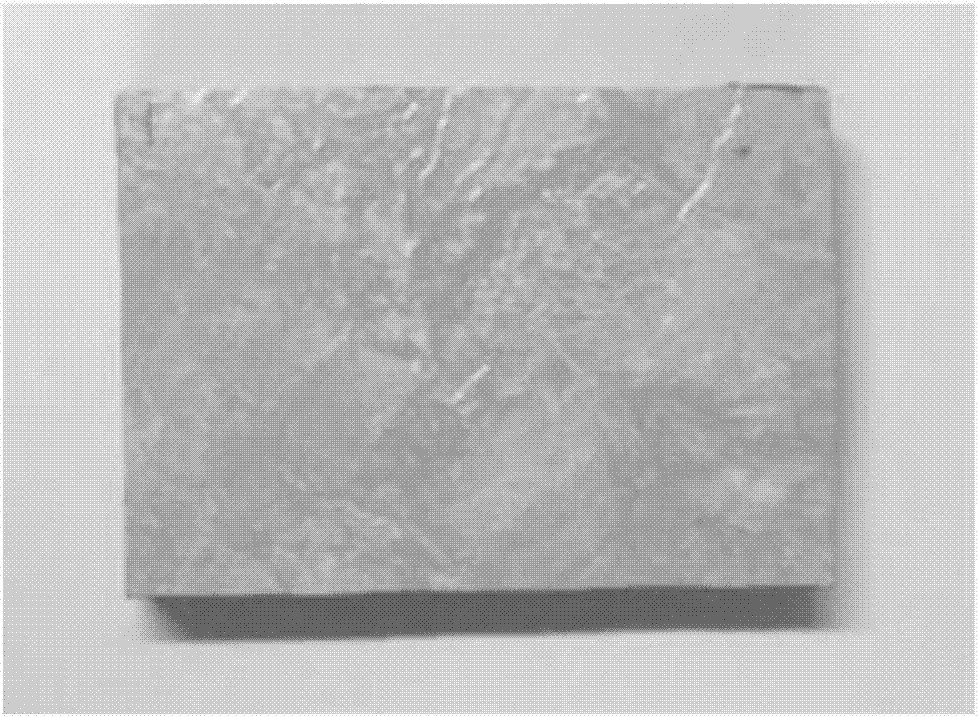Flame-retardant wood-plastic phase change composite material
A phase-change composite material and phase-change material technology, which are applied in the field of flame-retardant wood-plastic phase-change energy storage composite materials and their powder, particle and sheet products, and can solve the problems that do not involve flame-retardant properties, limitations, wood-plastic phase change, etc. Problems such as less research on variable composite materials
- Summary
- Abstract
- Description
- Claims
- Application Information
AI Technical Summary
Problems solved by technology
Method used
Image
Examples
Embodiment 1
[0028] Embodiment 1, 3.5kg dry straw debris raw material and 1.2kg melamine-pentaerythritol-ammonium polyphosphate (by mass ratio 1:1.2:1) and 0.05kg nanometer montmorillonite are mixed, then the mixture is mixed with 2kg polyethylene, 0.2kg of maleic anhydride grafted polyethylene, 2.6kg of methyl myristate, 0.1kg of expanded graphite, and 0.35kg of porous silica were mixed in a high-speed mixer to 80°C. After cooling, it is processed and formed at 160°C by using a compression molding process to obtain a flame-retardant wood-plastic phase change composite material. It can pass the national flame retardant standard test (GB / T8626 and GB 8624-2012), the thermal conductivity measured by the laser thermal conductivity meter is 0.35W / mK, the melting point measured by the differential scanning calorimeter is 15.3°C, and the phase change enthalpy is 50.7kJ / kg.
Embodiment 2
[0029] Embodiment 2, after fully mixing the dry 3kg 40-purpose poplar wood raw material and 3kg paraffin, add 0.6kg decabromodiphenyl ether and antimony trioxide mixture, 3kg polyvinyl chloride, 0.1 polypropylene, 0.04kg plasticizer, 0.02kg of heat stabilizer, 0.04kg of anti-impact agent, and 0.2kg of ethylene acrylic acid copolymer were mixed in a high-speed mixer to 60°C. It is molded at 180°C by extrusion molding technology to obtain a flame-retardant wood-plastic phase change composite material, which can pass the national flame-retardant standard test (GB / T8626 and GB 8624-2012), and the thermal conductivity measured by the laser thermal conductivity meter is 0.32 W / mK, the melting point measured by differential scanning calorimeter is 30°C, and the phase change enthalpy is 35.2kJ / kg.
Embodiment 3
[0030] Example 3: After thoroughly mixing 2 kg of dried wood fiber and 2 kg of stearyl alcohol at 80° C., 0.1 kg of silane coupling agent was added to treat the mixture. Then add 1kg expandable graphite, 0.5kg polyphosphate, 4kg polyvinyl chloride, 0.1kg white carbon black, 0.03kg plasticizer, 0.03kg heat stabilizer, 0.04kg antioxidant, 0.2kg acrylate copolymer, mix Even after. Using extrusion molding process and molding at 185°C, the flame-retardant wood-plastic phase change composite material can be obtained, which can pass the national flame-retardant standard test (GB / T8626 and GB8624-2012), and the thermal conductivity measured by the laser thermal conductivity meter is 0.75 W / mK, the melting point measured by differential scanning calorimetry is 55.3°C, and the phase change enthalpy is 32.3kJ / kg.
PUM
| Property | Measurement | Unit |
|---|---|---|
| phase transition temperature | aaaaa | aaaaa |
| melting point | aaaaa | aaaaa |
| melting point | aaaaa | aaaaa |
Abstract
Description
Claims
Application Information
 Login to View More
Login to View More - R&D
- Intellectual Property
- Life Sciences
- Materials
- Tech Scout
- Unparalleled Data Quality
- Higher Quality Content
- 60% Fewer Hallucinations
Browse by: Latest US Patents, China's latest patents, Technical Efficacy Thesaurus, Application Domain, Technology Topic, Popular Technical Reports.
© 2025 PatSnap. All rights reserved.Legal|Privacy policy|Modern Slavery Act Transparency Statement|Sitemap|About US| Contact US: help@patsnap.com

